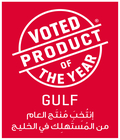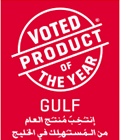Private Labels: The Fight to Win the CPG Industry
In today’s fast-moving, digitally-led world, the competition for your consumer’s attention is more aggressive than ever before. Confronted with endless information every day, consumers are better educated, and smarter about the way they buy. They are willing to try new products and are less loyal to multinational brands.
According to a 2019 Nielsen Survey, three-quarters of households agreed that retailer brands are good alternatives to multinational brands, and half are willing to buy more private-label products if a larger variety is available.

Amid the COVID-19 crisis, the consumer-packaged goods industry is facing the greatest disruption in consumer behavior throughout modern history. Shoppers are tightening their wallets and looking for cheaper goods and services, often purchasing more private label products.
Taking advantage of this opportunity, retailers implemented competitive approaches with their private brands. They were able to increase their market share, enhance their brand equity, and fill gaps left by multinational brands. On the other hand, multinational brands found themselves pressured to change their strategies to ensure that their price and promotions are adapted to the expectations of shoppers looking to save money.
As today’s consumers are more often combining offline and online shopping, the relationship between the brands and the consumers is expected to be further disrupted. According to a recent survey by Nielsen Brandbank, one-third of shoppers browse a product page during their online shopping experience. With online grocery growing fast, specifically after the COVID19 outbreak, shoppers are expected to buy more private-label products.
In our digital transformation era, e-groceries are playing a major role in promoting private labels. Amazon, for instance, opened new doors for this segment, when acquiring Whole Foods.
Over the next years, e-commerce channels are expected to keep on presenting many opportunities for private labels to compete with leading brands.

The changing consumer landscape is helping private labels become a local alternative to premium multinational products. With the COVID19 outbreak, shoppers became more concerned about their health and wellbeing. As their priorities shifted, they started buying fresher products and less packaged goods. Retailers found this health trend an opportunity to grow their business using premiumization. They quickly reacted by proposing to their clientele premium organic and natural products. By offering fresh “premium” options, retailers were not only able to meet consumers’ needs, but they were also able to boost sales across their entire stores.
As retailers capitalized on premiumization, they managed to position private labels much closer to multinational brands. Global FMCG brands should therefore develop innovative strategies to better serve the health-conscious consumers, a trend playing clearly in favor of the private label segment.
A world of new opportunities awaits proactive manufacturers capable of adapting quickly to the current FMCG trends. To respond to the ongoing shifts in shoppers’ behavior, retailers should keep on developing value-added products at reasonable prices.
Retailers and Multinational brands are encouraged to extend their product offering to niche categories such as organic foods and wellbeing, to widen their reach and appeal to all consumers.
While e- groceries platforms are enhancing the visibility and accessibility of private brands, the winners will be the ones who can offer consumer-driven and affordable innovations.




